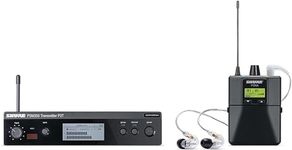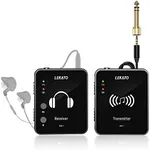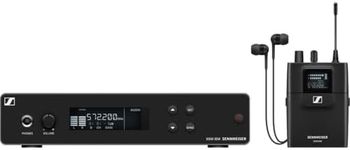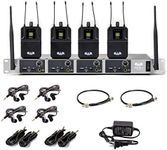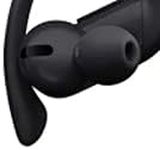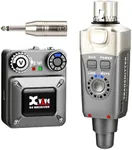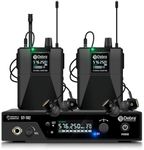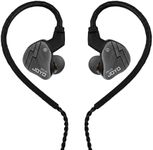Buying Guide for the Best In Ear Monitor Systems
In-ear monitor systems are essential for musicians, performers, and audio professionals who need to hear a clear and precise mix of their performance or audio feed. These systems help in reducing stage noise, protecting hearing, and providing a consistent audio experience. When choosing an in-ear monitor system, it's important to consider several key specifications to ensure you get the best fit for your needs.Frequency ResponseFrequency response refers to the range of frequencies that the in-ear monitors can reproduce. This is important because it affects the clarity and quality of the sound you hear. A wider frequency response range (e.g., 20Hz to 20kHz) means the monitors can reproduce both very low and very high sounds, providing a more detailed and accurate audio experience. If you are a musician or audio professional who needs to hear every nuance of the performance, look for monitors with a wide frequency response. For casual listening or less critical applications, a narrower range may suffice.
Driver TypeThe driver type in in-ear monitors determines how sound is produced. Common types include dynamic drivers, balanced armature drivers, and hybrid drivers. Dynamic drivers are known for their robust bass response and durability, making them suitable for bass-heavy music. Balanced armature drivers offer more precise and detailed sound, ideal for critical listening and professional use. Hybrid drivers combine both types to provide a balanced sound profile. Choose the driver type based on your sound preference and the type of music or audio you will be monitoring.
Fit and ComfortFit and comfort are crucial for in-ear monitors, especially if you will be wearing them for extended periods. A good fit ensures that the monitors stay in place and provide effective noise isolation. Look for monitors that come with multiple ear tip sizes and materials (such as silicone or foam) to find the best fit for your ears. Custom-molded in-ear monitors are also an option for the best fit and comfort but can be more expensive. Consider your comfort needs and how long you will be using the monitors when making your choice.
Noise IsolationNoise isolation refers to the ability of the in-ear monitors to block out external sounds. This is important for providing a clear and focused listening experience, especially in noisy environments like live performances or busy studios. Monitors with good noise isolation allow you to hear your mix more accurately without needing to increase the volume, which can protect your hearing. Look for monitors with a high level of passive noise isolation or consider active noise-canceling features if you need extra isolation.
Wireless vs. WiredIn-ear monitors can be either wireless or wired. Wireless systems offer more freedom of movement, which is beneficial for performers who move around a lot on stage. However, they may be subject to interference and require battery management. Wired systems provide a more stable and reliable connection with no latency issues, making them ideal for studio use or stationary performances. Consider your mobility needs and the environment in which you will be using the monitors when deciding between wireless and wired options.
Durability and Build QualityDurability and build quality are important factors, especially for professional use where the monitors may be subjected to frequent use and rough handling. Look for monitors made from high-quality materials that can withstand wear and tear. Features like detachable cables can also enhance durability, as they can be replaced if damaged. Consider the build quality and durability based on how and where you will be using the monitors to ensure they last longer and provide consistent performance.



